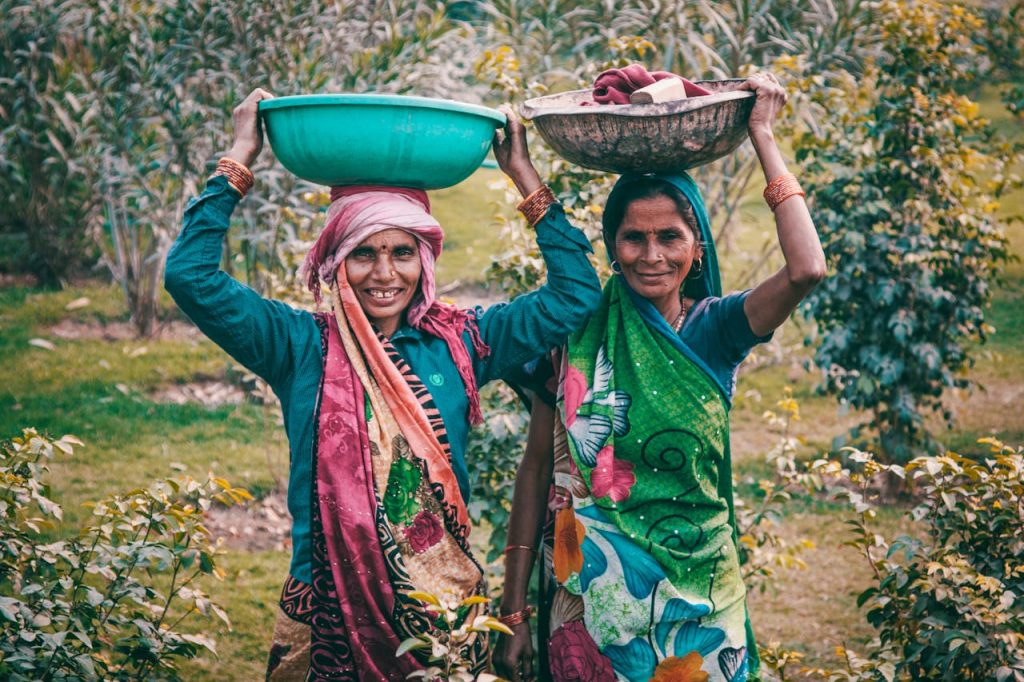Women are the light of every family. When they become independent, they help make their families and communities stronger. Financial inclusion refers to providing everyone with access to affordable financial services, including bank accounts, loans, and insurance. It plays a big role in helping women become more self-reliant. As more women get included in the financial system, the economy becomes stronger and more stable. From small business owners in rural villages to working women in cities, financial inclusion for women in India is shaping the country’s future.
1) Banking on Women: To Make Her Wealthy
In the last 10 years, more Indian women have started using formal financial services. Back in 2014, only 43% of women had access to a bank account. But now? According to the Global Findex 2021 report by the World Bank, that number has jumped to an impressive 78%.
A big reason behind this leap is the Pradhan Mantri Jan Dhan Yojana (PMJDY). This initiative has opened the door to the banking system for women. In fact, it has helped bring over 28 crore women into the formal banking network.
Even in rural areas, where financial services were once hard to reach, change is visible. The Reserve Bank of India (RBI) reports that rural women’s bank account ownership has increased from 48% in 2014 to 77% in 2021. It is a sign that women are stepping into financial independence like never before.
So, what does all this mean? With more women accessing financial services, they can now save, invest, and make decisions for themselves and for their families. This is a boost to the economy, more than just empowerment.

2) Women Entrepreneurship Schemes: To Build Her Business
Women are not just managing households; they are managing businesses too. Today, about 20% of all MSMEs (Micro, Small, and Medium Enterprises) in India are owned by women. These enterprises play a big role in creating jobs in rural areas.
Moreover, according to the International Finance Corporation (IFC), if women-led businesses are given full financial support and access to credit, they could boost India’s GDP by 27%. That is an economic game-changer.
Furthermore, through the Stand Up India Scheme, over ₹40,700 crore has been sanctioned to women entrepreneurs as of early 2024. That is real money helping real women chase real dreams.
When women lead businesses, they don’t just generate profits. But they uplift families and strengthen the national economy.
3) Closing the Credit Gap: To Get the Finance She Needs
Even though women are stepping up as entrepreneurs and earning members, access to credit still remains a big problem. When women get easier access to credit, they turn their ideas into income.
As per a report by Intellecap, there is a credit gap of over ₹1.7 lakh crore for women in India. But thankfully, things are beginning to change. Banks and financial institutions are stepping in with low-interest loans and digital lending platforms tailored for women. These tools are helping bridge the gap and bring more women into the credit system.
One standout success is the MUDRA Yojana. Under this scheme, over 68% of loans have gone to women. This will help women expand their small businesses.
4) Digital Access and Online Finance: To Touch Her Dreams
In recent years, digital financial inclusion has become a game-changer for women across India. Gone are the days when banking meant long queues and paperwork.
Today, over 260 million women actively use UPI (Unified Payments Interface). This sharp rise shows how quickly women are embracing digital payments in their daily lives.
Even better, innovative platforms like Mahila Money and fintech startups like Kaleidofin, PayNearby, and Avanti Finance are bringing smart, accessible financial tools directly to underserved women. From savings plans to microloans, everything is now just a few taps away.
Between 2018 and 2023, mobile banking adoption among women grew by 30%. With a smartphone in hand and the right tools in place, women are unlocking a new level of financial independence.

5) Women’s Self-Help Groups: To Make Her Independent
Across India, Self-Help Groups (SHGs) have quietly become a force of change. As of 2023, over 8.3 million SHGs are up and running, with a massive 90 million women actively involved.
These groups are not just for saving small amounts; they are building serious economic muscle. Under the Deendayal Antyodaya Yojana – National Rural Livelihood Mission (DAY-NRLM), SHGs have helped channel over ₹1.5 lakh crore in bank credit to women.
But the impact doesn’t stop there. SHGs are now deeply linked with savings schemes and micro-enterprises. They have created a web of support for women to generate income and take confident steps toward financial independence.
6) Shaping Financial Decisions at Home and Beyond: She is in Charge
Women in India are no longer just managing household budgets. But they are stepping up to lead in banks and policymaking.
For example, leaders like Nirmala Sitharaman, India’s Finance Minister, and Soma Mondal, former Chairperson of SAIL, show how women are shaping the country’s financial landscape at the top. This participation is a sign of building a strong, inclusive economy.
The shift is not limited to a few examples. According to SEBI, women now make up 18% of board members in listed companies.
Financial literacy empowers women to take charge of their own investments, savings, and retirement planning. As women grow more confident in handling money, they are influencing financial decisions in their families.

7) Strength of Financial Inclusion: Growth Driven by Her
When women have access to finance, the whole economy benefits. Empowering women financially is the smart thing to do for India’s future.
According to the McKinsey Global Institute, achieving gender parity in economic participation could boost India’s GDP by $770 billion by 2025.
Moreover, women reinvest 90% of their income back into their families, improving nutrition, education, and healthcare. This builds stronger human capital, which fuels long-term national growth.
Access to credit creates a big effect. It raises household income and generates ripple effects across local economies.
8) Government Support for a Strong Future: To Create Her World
The Indian government is laying the groundwork for a more inclusive financial future.
In the Union Budget 2023–24, a solid ₹2,400 crore was allocated to boost women entrepreneurship. This investment reflects a long-term vision of inclusive economic growth.
Various flagship schemes like Beti Bachao Beti Padhao, the Mahila Samman Savings Certificate (MSSC), and the Nari Shakti Vandan Adhiniyam continue to drive meaningful change by encouraging education and leadership among women.
With policy support growing stronger year after year, the future of women’s financial inclusion in India looks bright and powerful.
Final Thoughts: New Start, New India
Financial inclusion for women in India is more than just access to money. It is a path to independence, confidence, and growth. When women are financially empowered, they invest in their families, businesses, and communities. But to reach full potential, we need to keep supporting women at every step, especially in rural areas. Because when women grow, the nation grows.









